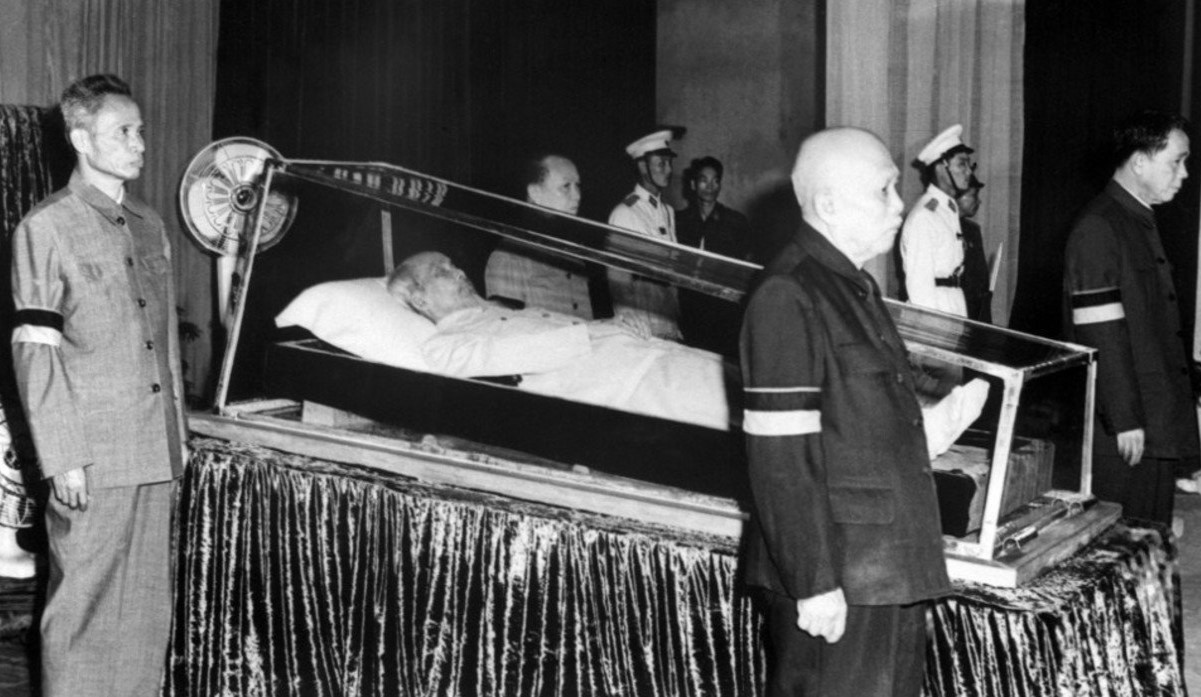The Secret Behind Ho Chi Minh’s Preserved Body

Have you ever wondered how Ho Chi Minh's preserved body remains in such remarkable condition? This fascinating question often intrigues visitors to Vietnam. Ho Chi Minh, the revered leader of Vietnam, passed away in 1969, yet his body looks almost lifelike. The secret lies in a meticulous preservation process carried out by a team of skilled experts. These specialists use advanced techniques to maintain his appearance, ensuring he remains a symbol of national pride. Visiting his mausoleum in Hanoi offers a unique glimpse into both history and science. Curious to learn more about this intriguing preservation method? Keep reading!
The Enigma of Ho Chi Minh's Mausoleum
Ho Chi Minh's Mausoleum in Hanoi, Vietnam, is a place of reverence and curiosity. Visitors marvel at the preservation of his body, which has remained remarkably intact since his death in 1969. Let's uncover the secrets behind this fascinating phenomenon.
The Process of Embalming
The preservation of Ho Chi Minh's body involves a meticulous embalming process. This technique, perfected by Soviet scientists, ensures the body remains lifelike for decades.
Initial Embalming: Shortly after Ho Chi Minh's death, Soviet experts embalmed his body using a special solution. This process took several months and involved replacing bodily fluids with chemicals to prevent decomposition.
Regular Maintenance: Every year, Ho Chi Minh's body undergoes maintenance. Experts from Russia visit Hanoi to reapply embalming fluids and ensure the body remains in pristine condition.
Controlled Environment: The mausoleum maintains a specific temperature and humidity level to slow down the natural decay process. This controlled environment is crucial for long-term preservation.
The Role of Soviet Expertise
The Soviet Union played a significant role in preserving Ho Chi Minh's body. Their expertise in embalming and preservation techniques has been instrumental in maintaining the body for over five decades.
Scientific Collaboration: Vietnamese and Soviet scientists worked together to develop the embalming process. This collaboration ensured the best possible preservation methods were used.
Specialized Training: Vietnamese technicians received training from Soviet experts. This knowledge transfer has enabled local experts to carry out routine maintenance and minor repairs.
The Mausoleum's Design
The design of Ho Chi Minh's Mausoleum also contributes to the preservation of his body. The structure is not only a symbol of respect but also a functional space designed to protect the embalmed body.
Granite Exterior: The mausoleum's exterior is made of granite, which helps regulate temperature and protect the interior from environmental factors.
Inner Chamber: The inner chamber, where Ho Chi Minh's body lies, is designed to maintain a stable climate. This chamber is sealed off from the outside world to prevent contamination.
Public Viewing and Security Measures
Ho Chi Minh's Mausoleum is open to the public, allowing visitors to pay their respects. However, strict security measures are in place to ensure the preservation of the body.
Limited Viewing Hours: The mausoleum is open for viewing only a few hours each day. This limited exposure helps reduce the risk of damage from environmental factors and human activity.
Security Protocols: Visitors must follow strict protocols, including no photography and maintaining silence. These measures help protect the sanctity of the mausoleum and the preserved body.
The Cultural Significance
Ho Chi Minh's preserved body holds immense cultural significance for the Vietnamese people. It serves as a symbol of national pride and a reminder of their revolutionary leader's legacy.
National Symbol: Ho Chi Minh's mausoleum is a national symbol, representing the enduring spirit of the Vietnamese people. It attracts millions of visitors each year, both locals and tourists.
Educational Value: The mausoleum also serves an educational purpose, teaching younger generations about Ho Chi Minh's contributions to Vietnam's independence and development.
The Legacy of Ho Chi Minh's Preserved Body
Ho Chi Minh's preserved body is more than a scientific marvel. It represents Vietnam's dedication to honoring its leader. The meticulous care taken to maintain his body shows the deep respect and admiration the Vietnamese people have for him. Visiting his mausoleum in Hanoi offers a unique glimpse into the nation's history and culture. The preservation process, involving Russian experts and advanced techniques, ensures his legacy endures. This site attracts millions of visitors each year, making it a significant cultural landmark. Understanding the efforts behind this preservation helps appreciate the lengths taken to keep Ho Chi Minh's memory alive. Whether you're a history buff or a curious traveler, this site is a must-see. It stands as a testament to Vietnam's rich heritage and the enduring impact of its beloved leader.

